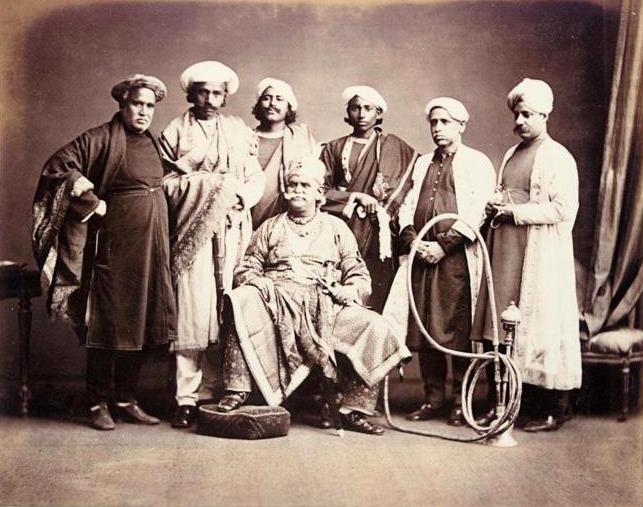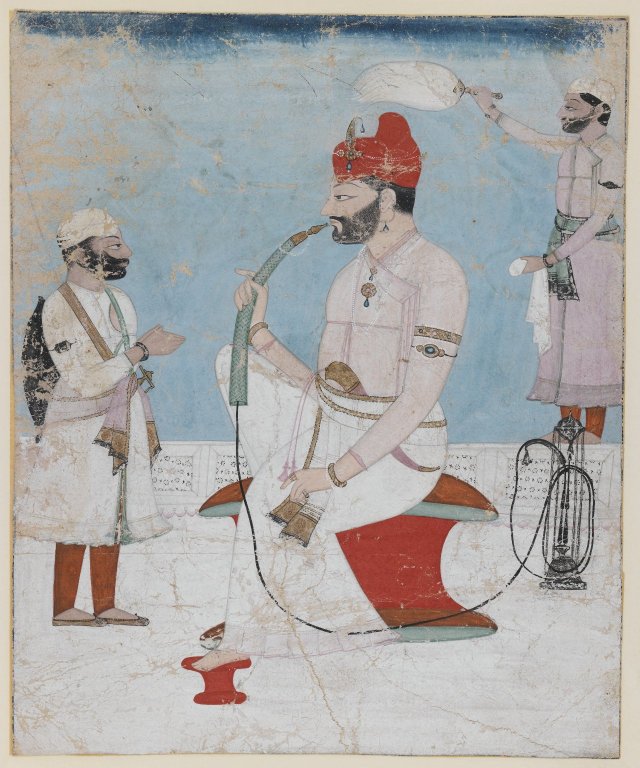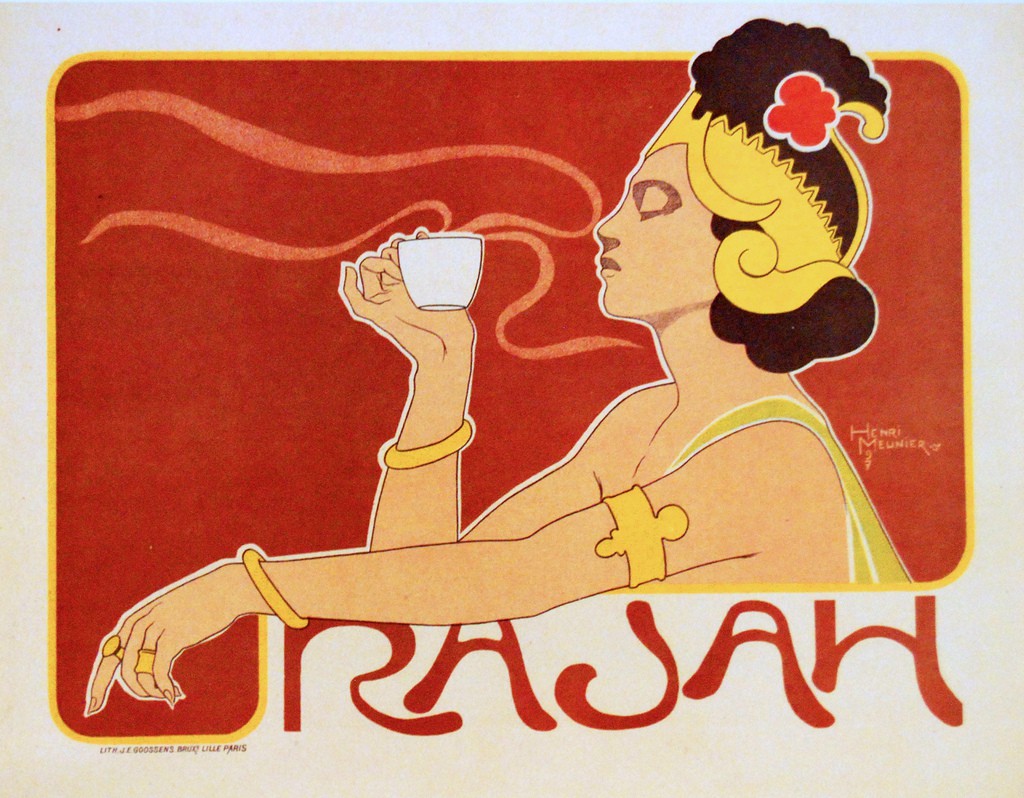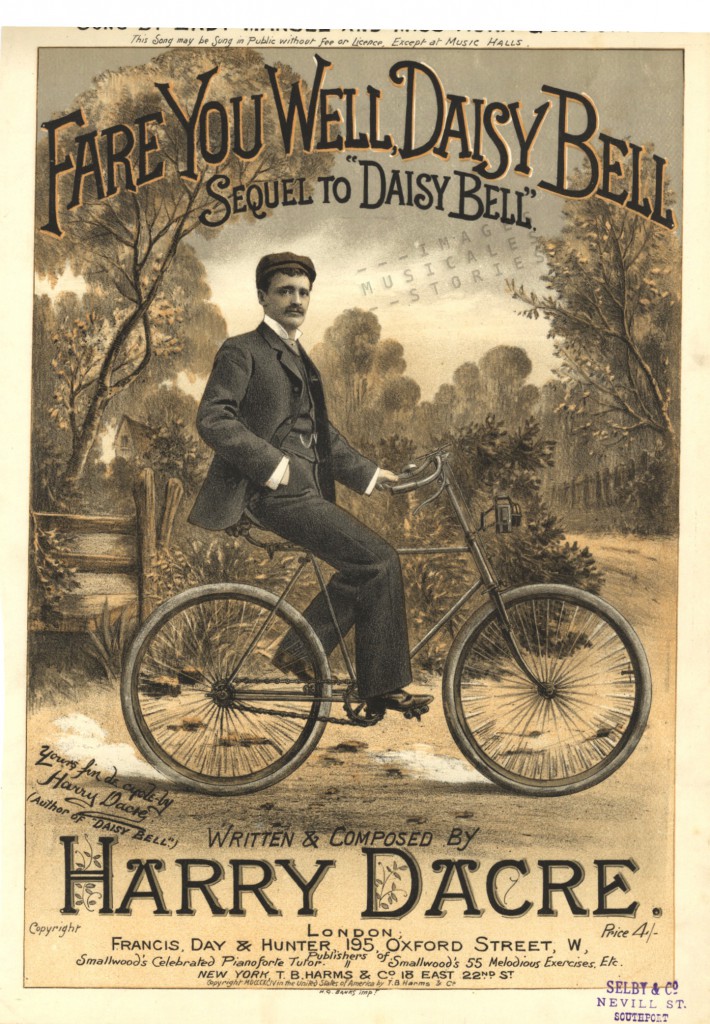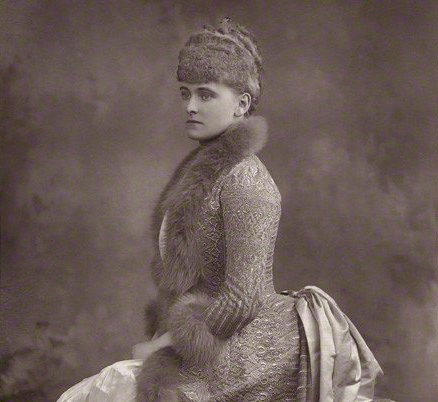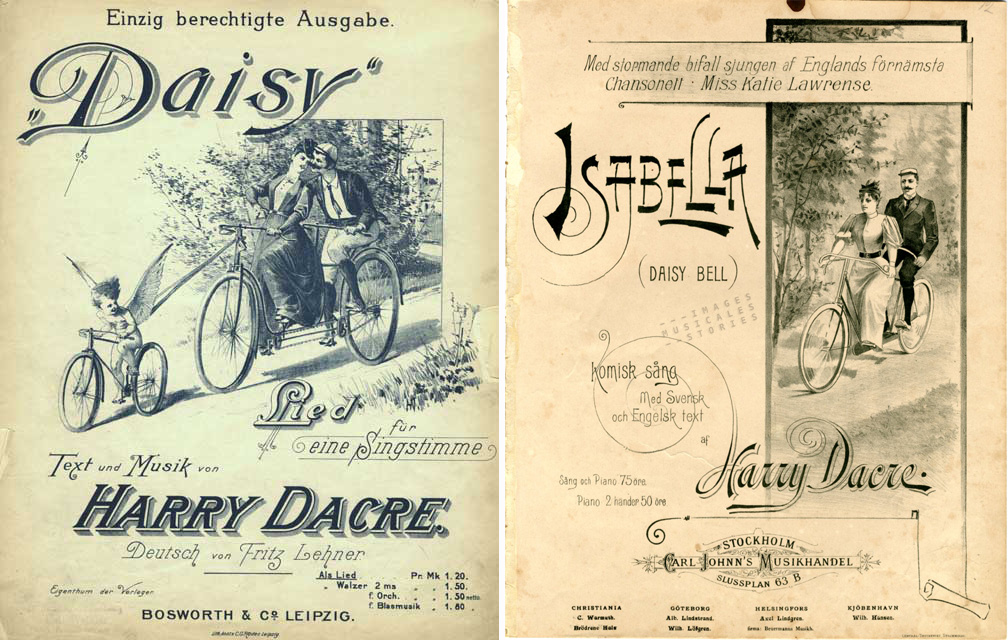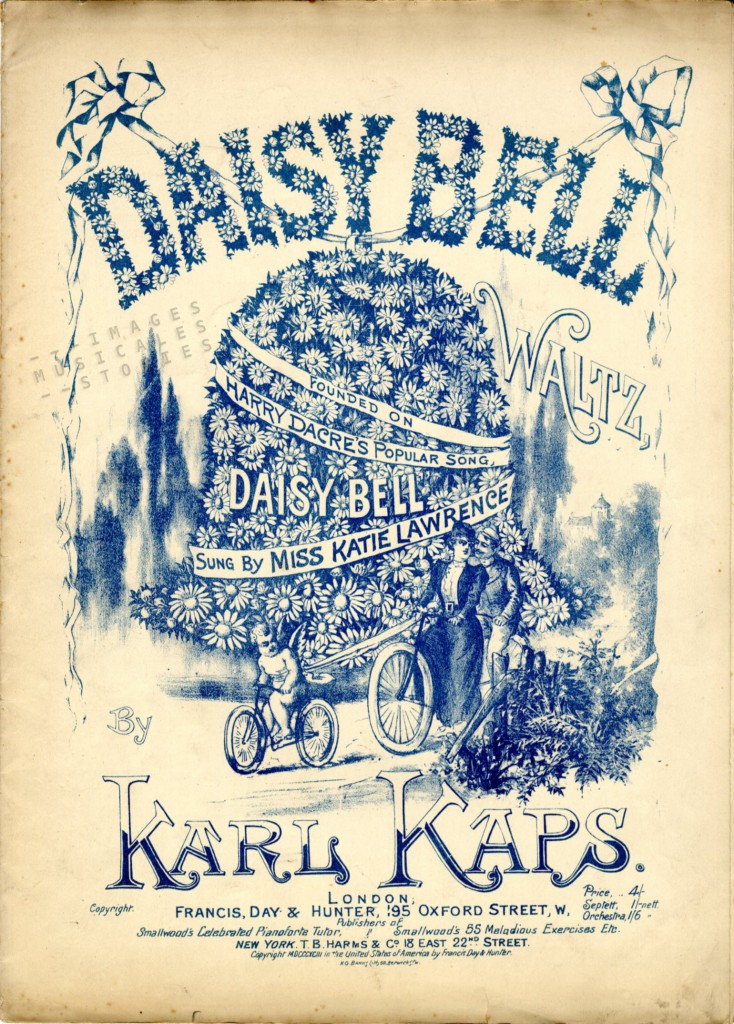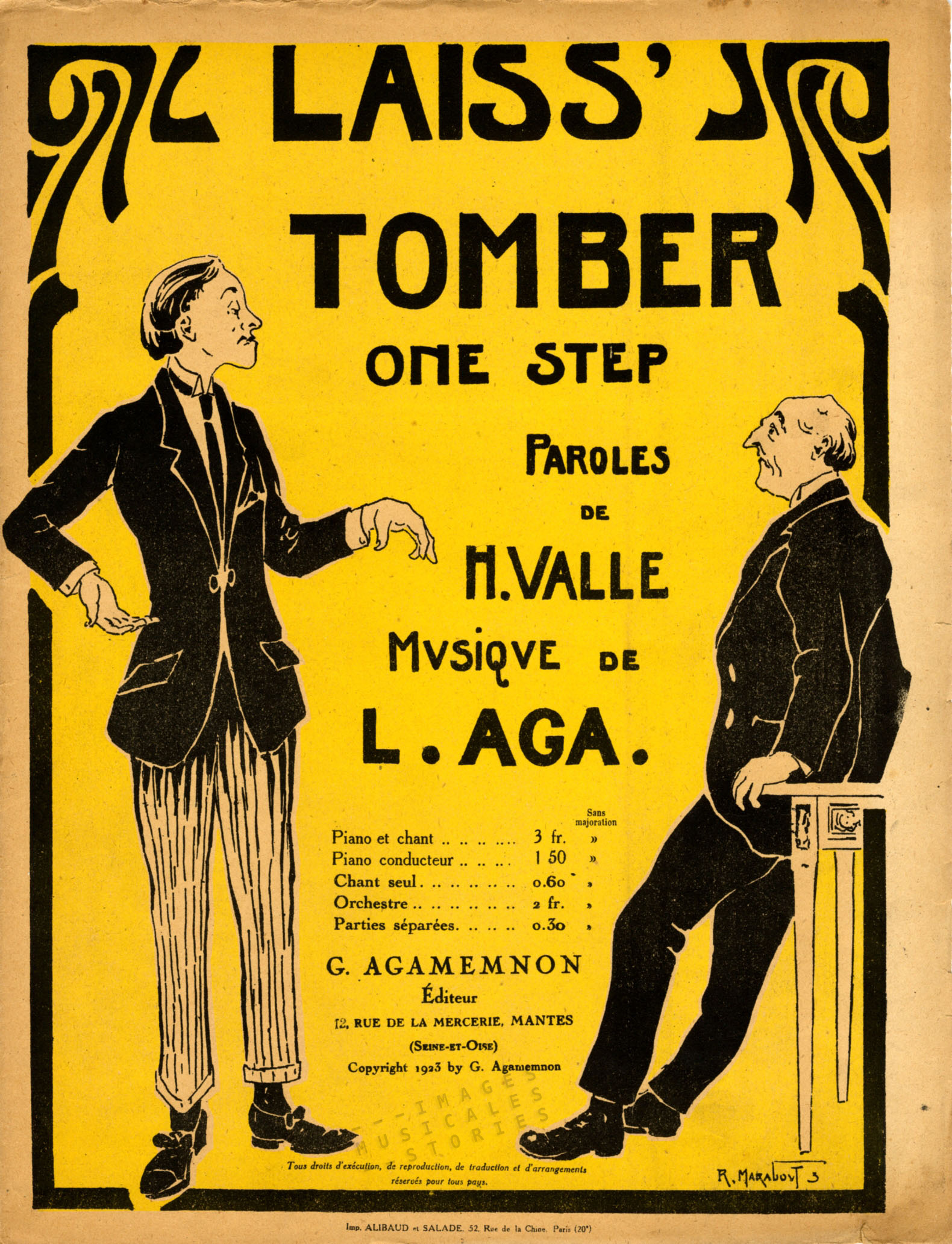
Agamemnon was the king of Mycenae. When Helen, the wife of his brother Menelaus, ran off with Paris, Agamemnon started the Trojan War. Thus he had a major impact on the turn of events in Greek mythology. The homonymous hero of our story, the publisher Gaston Agamemnon, does not share this renown.
We knew nothing about this man but for two other sheet music in our collection (see our previous posts on ‘Eventide‘ and ‘Le Rajah‘). All three pieces were published, composed and illustrated by the same three persons. All in the year 1923. Intriguing… We investigated this mere detail of French music publishing. Please follow our footsteps in history.

Gaston Agamemnon held shop in Mantes-la-Jolie, a middle-sized city along the Seine, 60 kilometres west from Paris. He started in 1903 as a manufacturer of piano’s and other musical instruments. We believe to have found an image of Mr. Agamemnon on an early postcard of the Rue de la Mercerie. On the doorstep of his rather large boutique he looks curiously at the photographer.

At his front window Mr. Agamemnon advertises ‘Cours et Leçons‘, ‘Violon & Solfège‘ and ‘Vente-Location‘. Apart from teaching and selling instruments, he also sells sheet music: we see many chansons prominently on display in his shop window.
A small article in Le Petit Parisien of 1909 relates how Gaston narrowly escaped from a fire accident: apparently a window had acted as a magnifying glass for the sun rays that set alight wood shavings in his workshop, leaving him half asphyxiated.

More significant is the advertisement in the Annuaire des Artistes of 1905 in which Agamemnon promotes his services as Editeur de Musique (publisher) and Chef d’Orchestre (director). He also specialises in teaching modern techniques for the violin and the piano. We also learn from dusty archives that Agamemnon was married to Claire Fenayrol. Aha, we found his Clytemnestra!
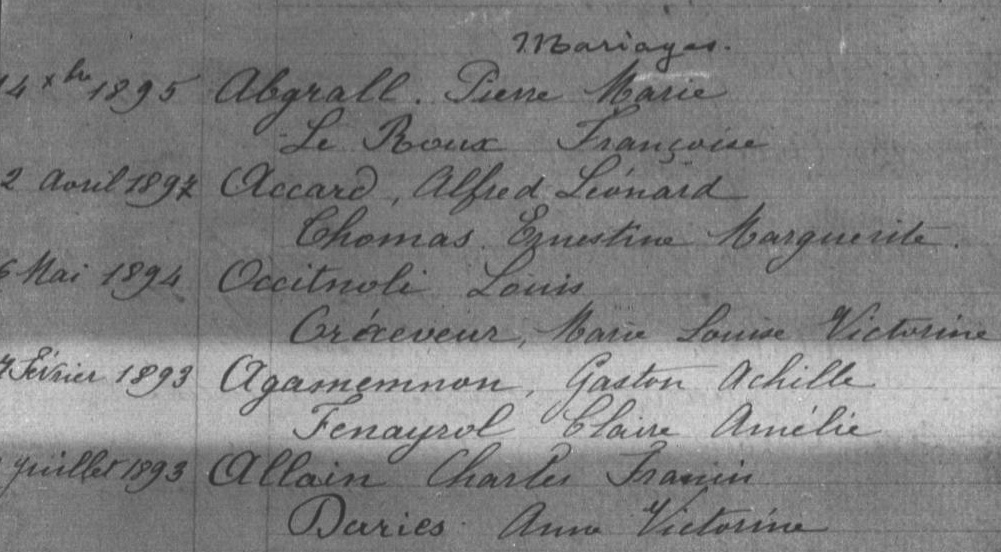
The rue de la Mercerie is no more. It vanished together with large parts of the city centre of Mantes-la-Jolie in 1944, during Allied air raids. The enormous damage was documented by the Vichy regime in newsreels. This video is an excerpt from Ina.fr video archives.
Almost all of Mantes-la-Jolie’s city centre was rebuilt after the war, as illustrated by the two ‘before-and-after’ postcard views.

One of the city architects who helped rebuild the town centre was Raymond Marabout (born 1886). We found early pictures of him as aerostatier during the First World War. He was wounded when he had to jump from his airship.
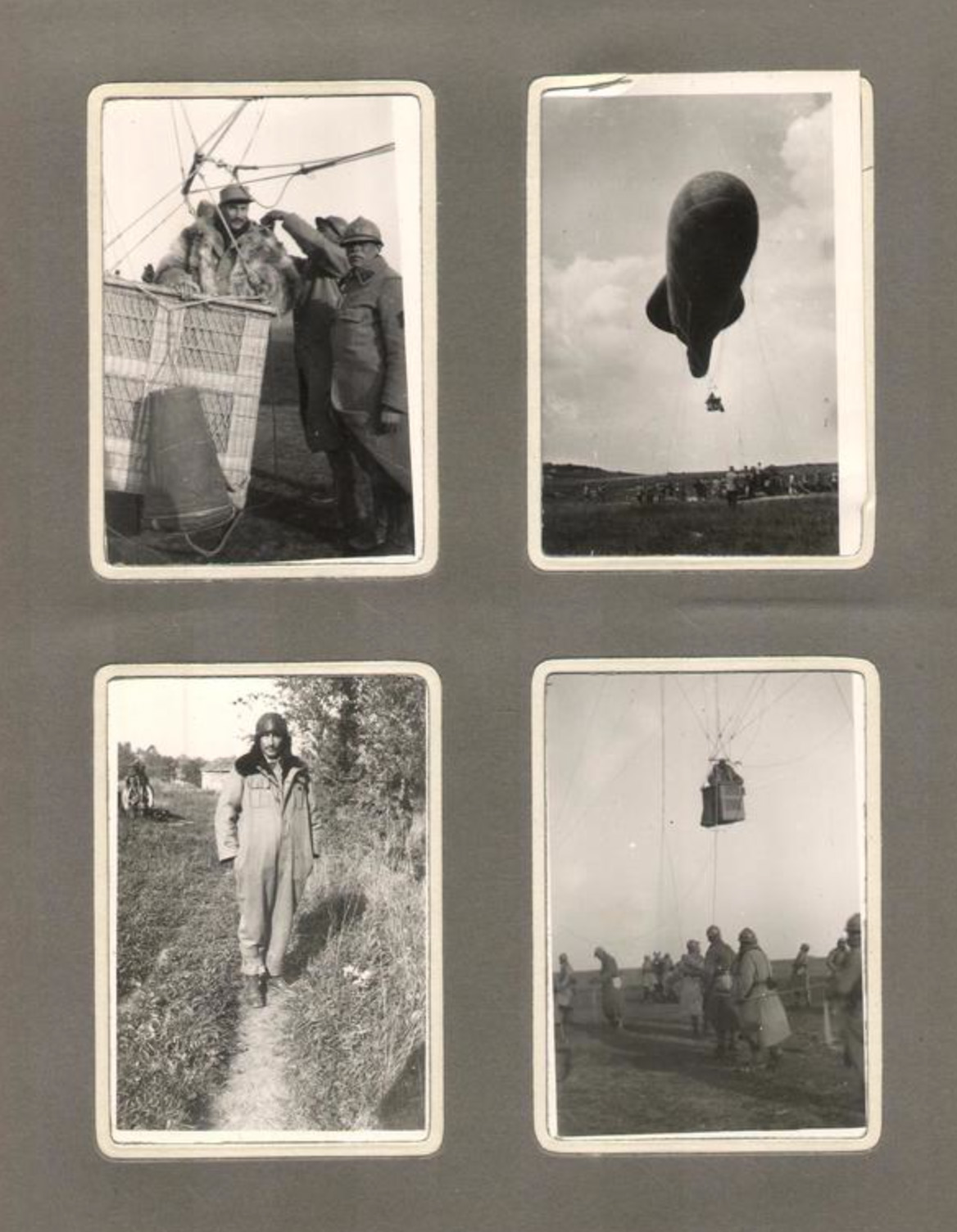
Raymond Marabout was not only an airship pilot and architect, but also an illustrator: he signed the three ‘Agamemnon’ covers above. He was also a rather good painter. We found this lovely post-impressionistic landscape on an auction site.
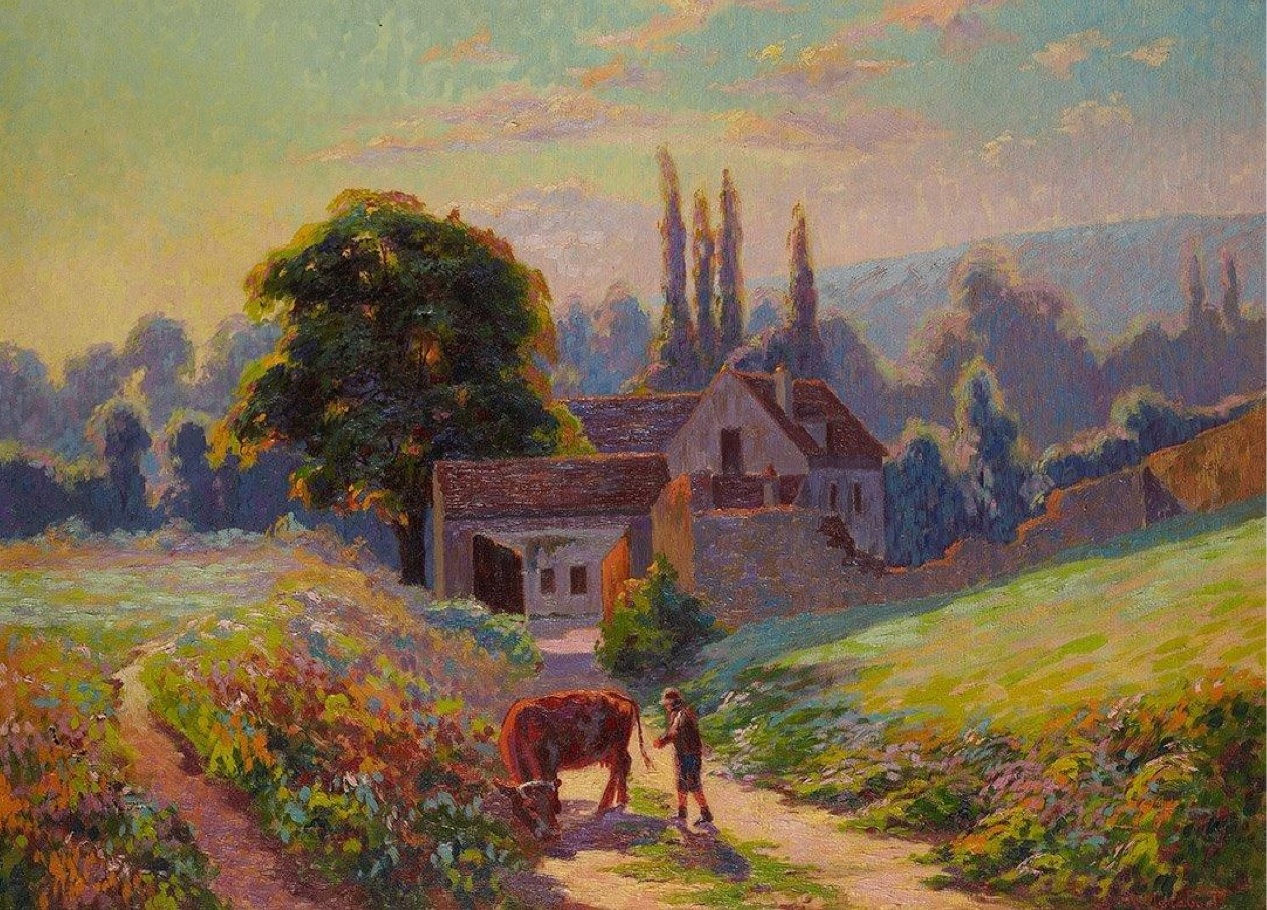

‘Le Rajah‘ sheet music is jokingly dedicated à mon ami Sidi-Ben-Marabout suggesting that Gaston Agamemnon and Raymond Marabout were friends. Agamemnon probably also befriended the painter Maximilien Luce, to whom he sold his house of Rolleboise.
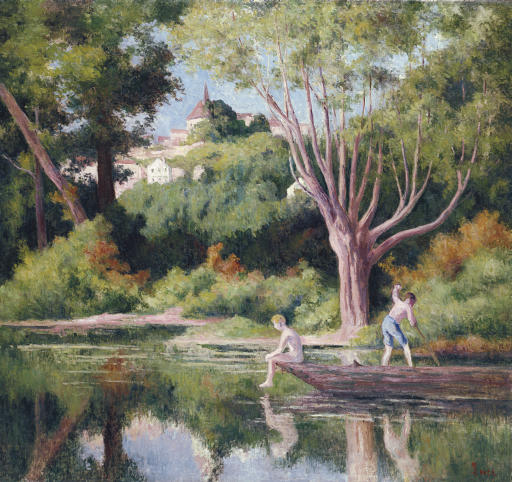
Gaston Agamemnon had at least one son: Lucien. Having learned the violin, Lucien became director of the Conservatoire in Mantes-la-Jolie. The BnF lists him as the author of a handbook on music theory and also as a composer until the 1960’s. Using the pseudonym L. Aga he created in 1923 the three ‘lighter’ compositions (one step and fox-trot shimmies) that his father published. These three items in our collection are thus traces of a brief family cooperation. Strangely, we also found reference to a painter Lucien Agamemnon around 1950. Is it the same person? Probably, as he also signed his work L. Aga.

We discovered a portrait of Lucien Agamemnon, not drawn by our illustrator Raymond Marabout, but painted by Frédéric Luce (son of Maximilien).
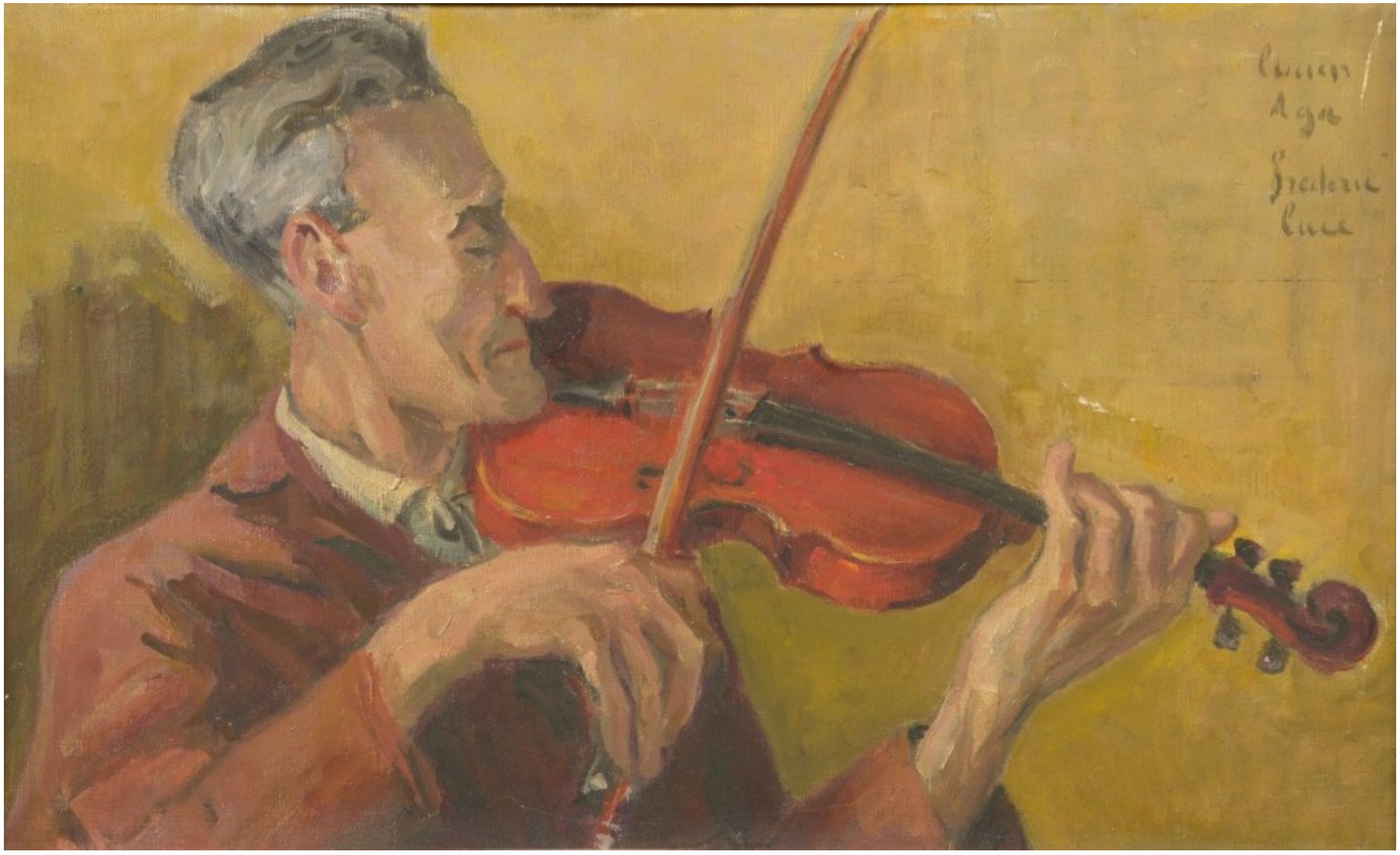
On Lucien Agamemnon we also discovered an odd newspaper fait divers, recounting that Lucien was a victim of road rage.
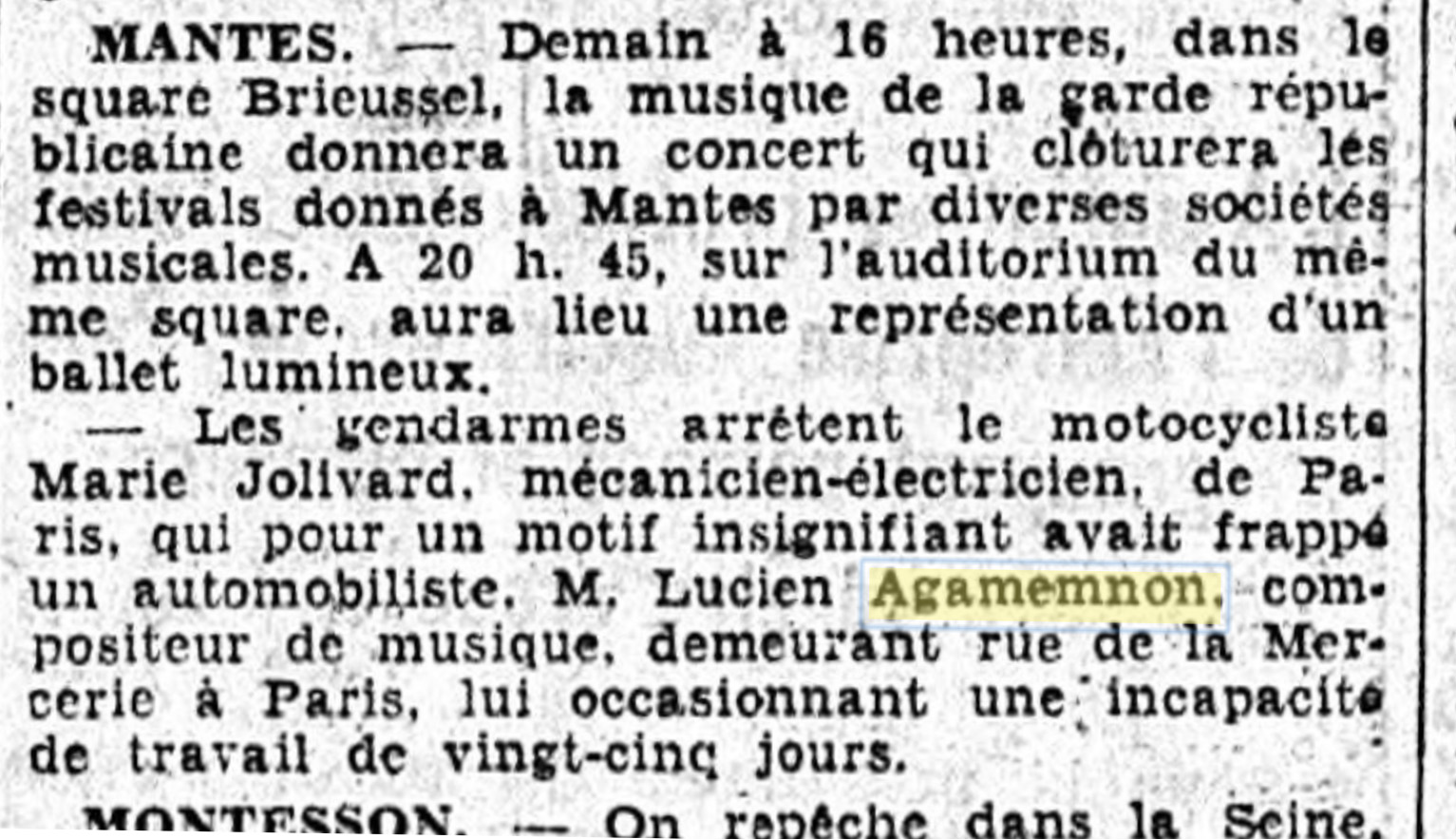
Digging deeper into the family history we discover Jean Agamemnon (1921-2003), grandson of Gaston and son of Lucien. Poet, artist and friend of the Luce family he became conservator of the Maximilien Luce museum in Mantes-la-Jolie (later musée de l’Hôtel-Dieu) until 1996. It fits to conclude this article on the Agamemnon-Marabout-Luce families with a sheet music cover illustrated by the anarchistic painter Maximilien Luce…
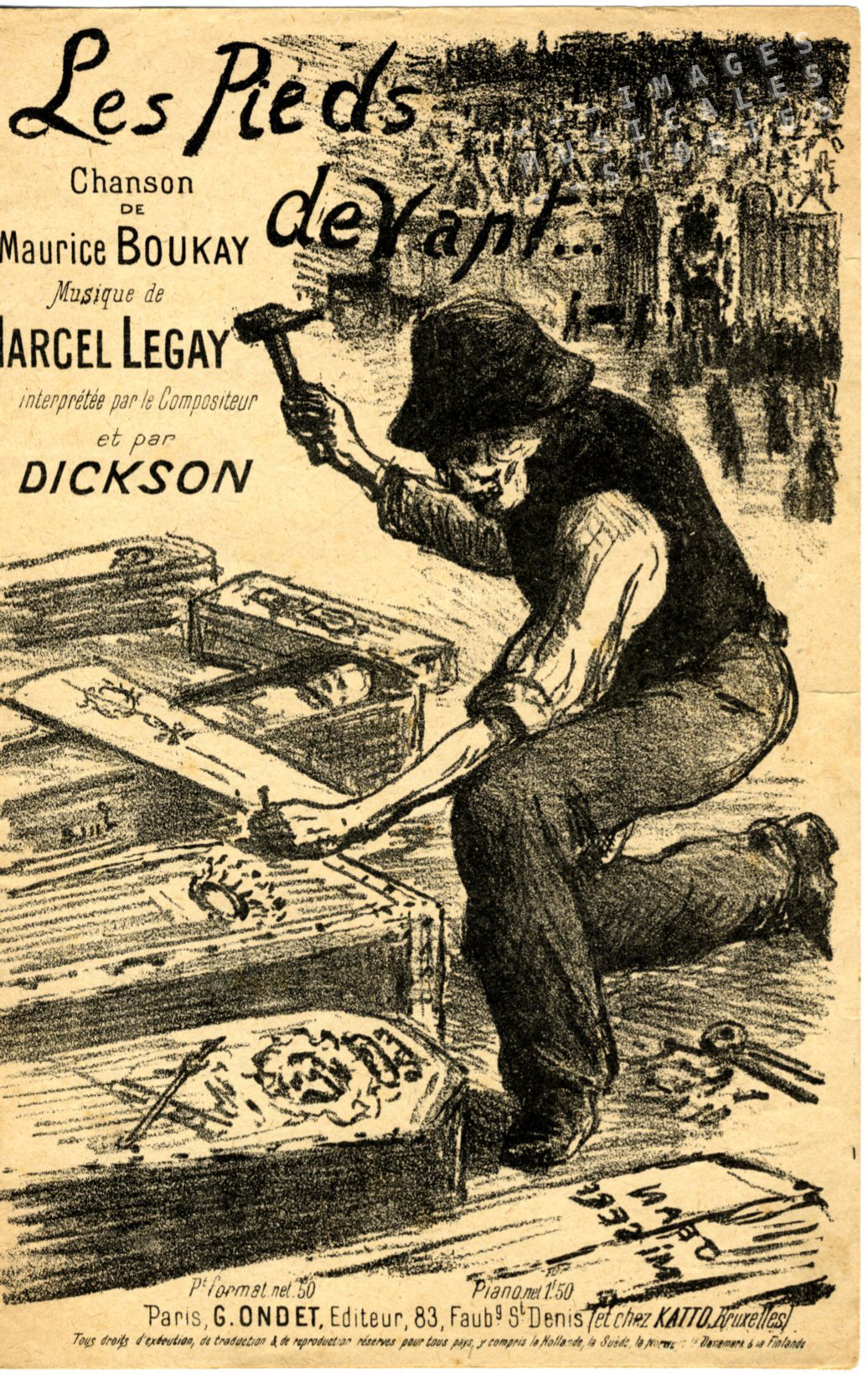
… and comfortingly sung by George Brassens. For all who seek solace: come on, sing along!
Tu t’en iras les pieds devant,
Ainsi que tout ceux de ta race,
Grand homme qu’un souffle terrasse.
Comme le pauvre fou qui passe,
Et sous la lune va rêvant,
De beauté, de gloire éternelle,
Du ciel cherché dans les prunelles,
Au rythme pur des villanelles,
Tu t’en iras les pieds devant.
Tu t’en iras les pieds devant,
Duchesse aux titres authentiques,
Catin qui cherches les pratiques,
Orpheline au navrant cantique.
Vous aurez même appris du vent,
Sous la neige, en la terre grise,
Même blason, même chemise,
Console toi fille soumise,
Tu t’en iras les pieds devant.
Tu t’en iras les pieds devant,
Oh toi qui mens quand tu te signes,
Maîtresse qui liras ces lignes,
En buvant le vin de mes vignes,
À la santé d’un autre amant,
Brune ou blonde, être dont la grâce,
Sourit comme un masque grimace,
Voici la camarde qui passe.
Tu t’en iras les pieds devant.
Tu t’en iras les pieds devant,
Grave docteur qui me dissèques,
Prêtre qui chantes mes obsèques.
Bourgeois, prince des hypothèques,
Riche ou pauvre, ignorant, savant,
Camarade au grand phalanstère,
Vers la justice égalitaire,
Nous aurons tous six pieds de terre.
Tu t’en iras les pieds devant.


